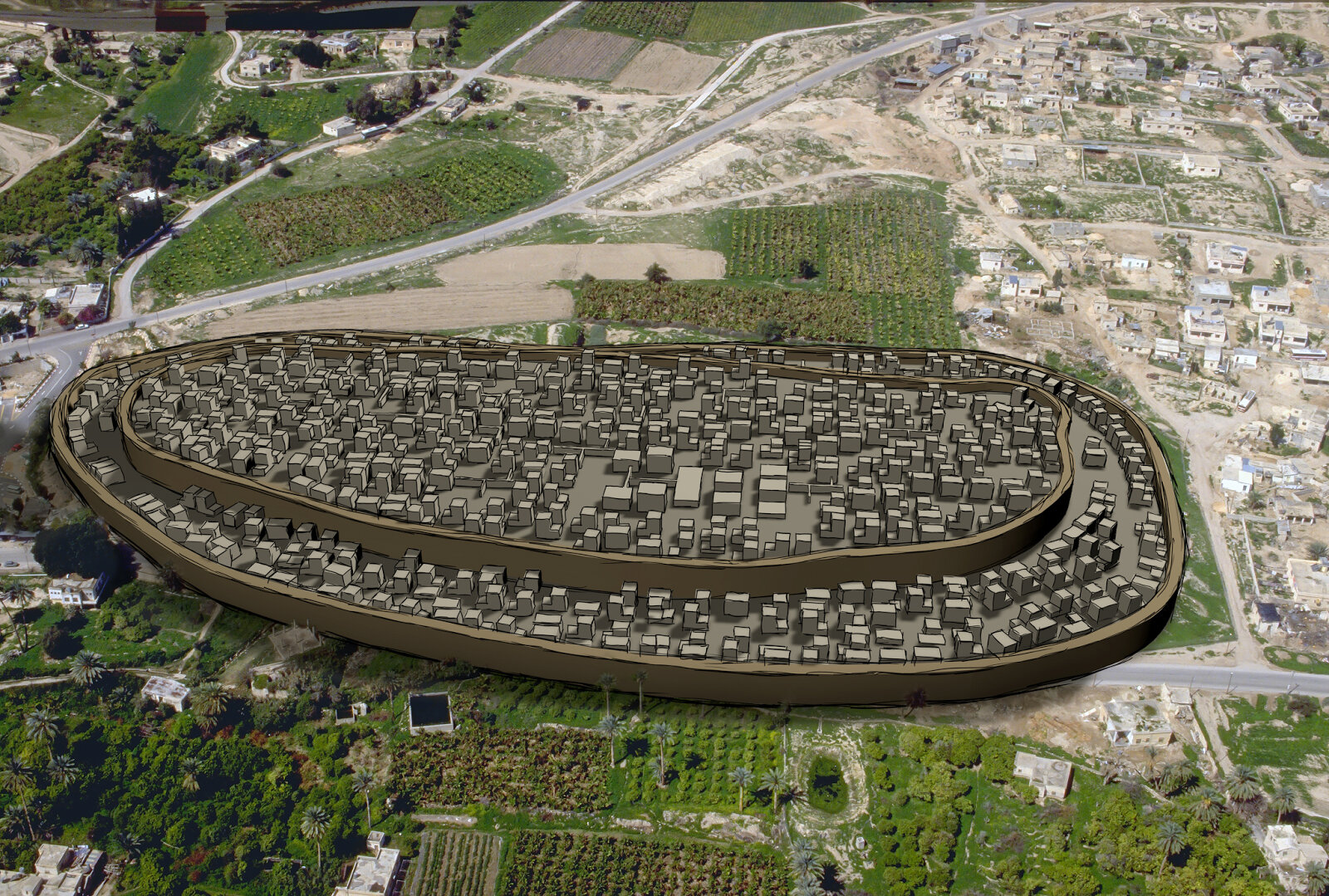Jericho, Arabic Arīḥā, town located in the West Bank. Jericho is one of the earliest continuous settlements in the world, dating perhaps from about 9000 BC. Archaeological excavations have demonstrated Jericho’s lengthy history. The city’s site is of great archaeological importance; it provides evidence of the first development of permanent settlements and thus of the first steps toward civilization.Traces have been found of visits of Mesolithic hunters, carbon-dated to about 9000 BC, and of a long period of settlement by their descendants. By about 8000 BC the inhabitants had grown into an organized community capable of building a massive stone wall around the settlement, strengthened at one point at least by a massive stone tower. The size of this settlement justifies the use of the term town and suggests a population of some 2,000–3,000 persons. Thus, this 1,000 years had seen movement from a hunting way of life to full settlement. The development of agriculture can be inferred from this, and grains of cultivated types of wheat and barley have been found. Jericho is thus one of the places providing evidence of very early agriculture. It is highly probable that, to provide enough land for cultivation, irrigation had been invented. This first Neolithic culture of Palestine was a purely indigenous development.
Walls of Jericho
These occupants were succeeded about 7000 BC by a second group, bringing a culture that was still Neolithic and still not manufacturing pottery, though it was not indigenous. This occupation probably indicates the arrival of newcomers from one of the other centres, possibly in northern Syria, in which the Neolithic way of life based on agriculture had developed. This second Neolithic stage ended about 6000 BC. For the next 1,000 years there is little evidence of occupation at Jericho. Only about 5000 BC did Jericho show the influences of developments that had been taking place in the north, where an ever-increasing number of villages had appeared, still Neolithic but marked by the use of pottery. The first pottery users of Jericho were, however, primitive compared with their predecessors on the site, living in simple huts sunk in the ground. They were probably mainly pastoralists. Over the next 2,000 years, occupation was sparse and possibly intermittent.
Aerial view of ancient Jericho.
At the end of the 4th millennium BC, an urban culture once more appeared in Jericho, as in the rest of Palestine. Jericho became a walled town again, with its walls many times rebuilt.About 2300 BC there was once more a break in urban life. The nomadic newcomers, consisting of a number of different groups, were probably the Amorites. Their successors, about 1900 BC, were the Canaanites, sharing a culture found the whole length of the Mediterranean littoral. The Canaanites reintroduced town life, and excavations have provided evidence both of their houses and of their domestic furniture, which was found in their tombs as equipment of the dead in the afterlife. These discoveries have indicated the nature of the culture that the Israelites found when they infiltrated into Canaan and that they largely adopted.
3D reconstruction of Ancient Jericho
Jericho is famous in biblical history as the first town attacked by the Israelites under Joshua after they crossed the Jordan River (Joshua 6). After its destruction by the Israelites it was, according to the biblical account, abandoned until Hiel the Bethelite established himself there in the 9th century BC (1 Kings 16:34). Jericho is mentioned several other times in the Bible. Herod the Great established a winter residence at Jericho, and he died there in 4 BC. Excavations conducted in 1950–51 revealed something of Herodian Jericho: a magnificent façade along the Wadi Al-Qilṭ is probably part of Herod’s palace, and its style illustrates Herod’s devotion to Rome. Traces of other fine buildings can be seen in this area, which became the centre of Roman and New Testament Jericho, approximately 1 mile (1.6 km) south of that of the Old Testament town. Jericho of the Crusader period was on yet a third site, a mile east of the Old Testament site, and it was there that the modern town would later develop.
14th century map of Jericho in Farchi Bible
WRITTEN BY Kathleen Mary Kenyon Principal, St. Hugh's College, University of Oxford, 1962–73. Director, British School of Archaeology in Jerusalem, 1951–66. Author of Archaeology in the Holy Land; Digging Up Jericho; and others.











